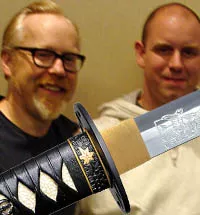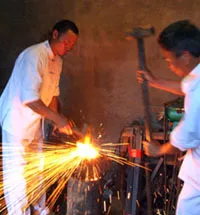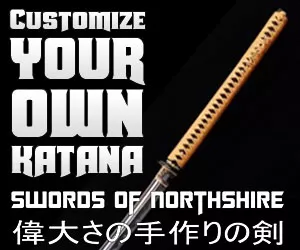Recent Articles
-
Real Katana Pushed to the limits
Mar 07, 25 01:16 AM
2 parallel lines to the hamon--what are we looking at here?
by Caleb
(Vancouver)

habuchi
QUESTION: If my intentions succeed, the included picture should show a hamon, the habuchi of which widens from a thin line from the left, to a thicker width towards the left. In the middle, however, the picture should also show two short lines parallel to the hamon, with a width much thinner than the main hamon, but with the same, light color as the hamon, showing clearly against the darker background of the Ha...
This is not a scratch. I scrubbed it diligently with tsukono many times after it has been polished scratch-free (almost) with all the stones up to hadori. A significant amount of material has been removed to reveal this; this is not something just on the surface...
What do you think? Can it be some kind of activity? Or is it just some sort of a mistake. This is a Cheness Kaze, by the way...it'd be quite interesting if a $300 sword can actually pack some harataki...
It'd be more worthwhile than Hanwei's acid-etched yakiba, to say the least
Caleb
ANSWER: Looks like Harataki to me..! Definitely a pleasant surprise on a sub US$300, nice work on uncovering that Caleb.
Cheers,
- Paul
Comments for 2 parallel lines to the hamon--what are we looking at here?
|
||
|
||
|
||
|
||
|
||
|
Click here to add your own comments Join in and write your own page! It's easy to do. How? Simply click here to return to Ask Questions. |














